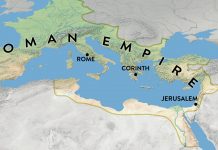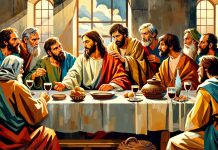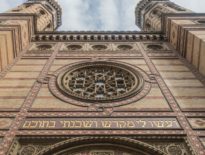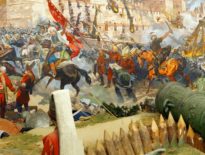When we read the Gospels, we may be put off by the way Jesus Christ interprets the Hebrew Scriptures.
Therefore, in this article, I briefly examine the way in which Jesus used the hermeneutic methods of His time, also used by Jewish sages, Greek philosophers, and New Testament (NT) writers. These include allegory, typology, analogy, and prophetic interpretation. We will briefly analyse some examples from the Gospels, in which Jesus used the Old Testament (OT), not in a clear and understandable way,[1] but in a cryptic and illustrative form.
The prophetic reinterpretation of Isaiah
Jesus’s disciples were also upset that their Master did not speak openly, but used parables, leaving room for interpretation. When they approached Him on this matter, Jesus answered in an even more surprising way: “This is why I speak to them in parables: ‘Though seeing, they do not see; though hearing, they do not hear or understand.’ In them is fulfilled the prophecy of Isaiah: ‘You will be ever hearing but never understanding; you will be ever seeing but never perceiving. For this people’s heart has become calloused; they hardly hear with their ears, and they have closed their eyes. Otherwise they might see with their eyes, hear with their ears, understand with their heart and turn, and I would heal them’” (Matthew 13:13-15).[2]
Jesus’s quote comes from Isaiah 6:9-10 and underlines His decision to send an encrypted message to the people. The immediate conclusion we might be tempted to draw would be that the parables have the role of diminishing the listeners’ chances of returning to God and, at the same time, of increasing their guilt because of their persistence in their sin.
However, we must not draw hasty conclusions. Jesus wraps the message of the messianic kingdom in codified language only after His listeners have chosen not to be open to His message. The parables come after the leaders’ growing rejection of Jesus’s preaching, which culminates in them attributing His power to Beelzebub (Matthew 12:24; Mark 3:22; Luke 11:15). Following this human decision to defy the clear testimony of the Holy Spirit comes the divine judgment, which consists of presenting salvation in such a way that those who hear it will not understand it.
This is not the case with the disciples. Because they have opened their hearts to receive the message of Jesus, they have the fortune to receive even more of the significance and principles of the new kingdom that Jesus came to establish (Matthew 13:16).
In this way, the disciples lived in a time coveted by many saints and prophets before them (Matthew 13:17): the time of the Messiah.
The “Jonah and Nineveh” typology
Typology, in this context, means taking over an OT character or event by the NT to foreshadow the person and activity of Jesus. The connection between the OT types and the antitypes is made not only by means of form, but also by the background structure of the two elements. Among the best known typologies is that of the prophet Jonah, mentioned in Matthew 12:38-42; 16:1-4; Mark 8:11-12; and Luke 11:29-32.
The story of the prophet Jonah gave Jesus the opportunity to speak of Himself as a divine sign when Jewish officials demanded proof from Jesus that He had a divine mission. The request of the Pharisees and scribes was dishonest, since they had already decided to kill Him (Matthew 12:14). They had refused to be persuaded by Jesus’s signs and preaching until then, and their request was not meant to give Jesus the opportunity to prove who He was, but to expose Him—to show that He was not who He said He was.
Using Jonah as a type, Jesus shifts the stakes of the discussion initiated by the leaders’ diatribe to the true purpose of His mission. As Jonah had spent three days in the depths, with no hope of seeing the light again, “so the Son of Man will be three days and three nights in the heart of the earth” (Matthew 12:40).[3]
Using the form of the divine passive “none will be given it” (Matthew 12:39), Jesus addresses His audience in God’s name, refusing to answer their request. Nevertheless, His is a relative refusal, since He still offers them a sign, although a historical one, not one that is anchored in their present time.[4]
Christ’s death and resurrection are at the heart of Jesus’s message and mission, and later of the church (Acts 2:24; 13:30; 17:31). Therefore, this sign is the greatest that could be given to them, but which they could not understand, because they had already decided to reject Jesus.
Using the typology of Jonah, Jesus redirects the accusations from Him to the accusers. The people of Nineveh listened to Jonah’s message and accepted it. Instead, Jesus’s generation, although having had the opportunity to witness the work of a prophet “greater than Jonah” (Matthew 12:41), rejected and condemned Him. Therefore, at the judgment, they will be condemned by the heathen of Nineveh who have returned to God.
Jonah’s typology gives Jesus the opportunity to open a sensitive subject for the Jews, who considered themselves the chosen people. In addition to the example of the Ninevites, Jesus also mentions the queen of the South (Matthew 12:42), who was impressed by Solomon’s wisdom. Thus, Jesus contrasts the pagan receptivity to the messages of certain prophets (the queen of Sheba “came from the ends of the earth”—Matthew 12:42) with the stubbornness of the chosen people, who rejected the Greatest Prophet.
The analogy of the flood
Jesus spoke of the flood of Noah’s day in the context of His warnings and exhortations concerning the preparation for the Parousia, or the return of the Lord. “As it was in the days of Noah, so it will be at the coming of the Son of Man. For in the days before the flood, people were eating and drinking, marrying and giving in marriage, up to the day Noah entered the ark; and they knew nothing about what would happen until the flood came and took them all away. That is how it will be at the coming of the Son of Man” (Matthew 24:37-39 NIV).
That is how it will be at the coming of the Son of Man (Matthew 24: 37-39 NIV).
Jesus emphasizes here the indifferent and guilty normalcy that kept people ignorant of the judgment they could anticipate, but which took them by surprise. The meaning of the expression “they knew nothing” (gr. Oὐκ ἔγνοσαν) often does not express a lack of knowledge. It could also mean deliberate rejection, as well as an inability to “understand” or “recognize” the signs of imminent judgment.[5]
The attitude of Noah’s generation illustrates the behaviour of the generation at the time of Jesus’s return. Immediate concerns will distract people from recognizing the nearing Parousia, causing them to be surprised and unprepared for judgment.
Conclusion
Jesus uses cryptic language when He wants to convey a veiled sentence. Only in the last week of His life are Jesus’s moral speeches exposed in open form.[6] Until then, Jesus often uses analogies and typologies whose meaning can only be understood by those who are willing and open. As Jesus is increasingly rejected by the Jewish people, His veiled warnings intensify. At the same time, His disciples are openly made partakers of the mysteries of the Messianic Kingdom, which consist of Jesus’s passion, death, and resurrection.
Iosif Diaconu believes that the study of the Bible is fascinating, firstly, for what it teaches us and, secondly, because it helps us give up what we erroneously believe about the Bible, its authors, and topics.




















